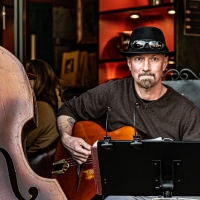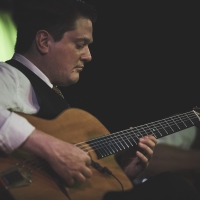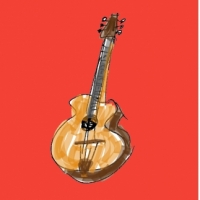DjangoBooks.com
Welcome to our Community!
Categories
- 20K All Categories
- 1.1K General
- 476 Welcome
- 59 Archtop Eddy's Corner
- 146 CD, DVD, and Concert Reviews
- 384 FAQ
- 26 Gypsy Jazz Italia
- 26 Photos
- 202 Gypsy Picking
- 21 Unaccompanied Django
- 15 Pearl Django Play-Along Vol.1
- 17 Gypsy Fire
- 45 Gypsy Rhythm
- 1.4K Gypsy Jazz University - Get Educated
- 130 Gypsy Jazz 101
- 224 Repertoire
- 218 History
- 707 Technique
- 51 Licks and Patterns
- 6 Daniel Givone Manouche Guitare Method Users Group
- 20 Eddie Lang Club
- 1.3K Gypsy Jazz Gear
- 801 Guitars, Strings, Picks, Amps, Pickups and Other Accessories
- 457 Classifieds
- 49 Recording
- 62 Other Instruments
- 18 Violin
- 5 Mandolin
- 22 Accordion
- 7 Bass
- 10 Woodwinds
- 346 Gypsy Jazz Events
- 142 North America
- 109 Europe
- 95 International
In this Discussion
Who's Online (0)
March Song Of The Month--(I'm) Confessin'
This month's song is great to call in the middle of a set when there have been a lot of mid-tempo to up-tempo songs played. Usually played at a slow tempo, it'll bring a fiery band back to a cool, delicate groove and the recognizable head will resonate with many audience members. It's origin is interesting--it was originally published in 1929 as "Lookin' For Another Sweetie", with the lyrics credited to Sterling Grant & the music to Chris Smith. The 1st recording of that was by Fats Waller. But in 1930, it appeared as (I'm) Confessin' (That I Love You), with lyrics by Al Neiburg & music by Doc Dougherty and Ellis Reynolds. This version was 1st recorded by Louis Armstrong. Through the years, it's been recorded by so many great artists, but some notable recordings for me are those by Thelonius Monk and Les Paul & Mary Ford. My favorite Django version is from his sessions in Paris, 3/10/53. Regular readers of this column may notice that if there's a version of the song of the month from those sessions, it'll usually be my favorite recording of it. I love his electric tone & find his phrasing prescient. Here's a link to that recording:
My band plays it in G, I'll post the chart we use later.















Comments
Below is the chart my band uses. Note one issue--neither I nor anyone I play with plays the F7 on bar 3, we play G6. (This makes line 1 the same line 7).
For years I played a simple
|G D7 |G |G |E7 |
before I ran into this reharmonized version. I kinda learned to live with it when it comes up but the straightforward while staying in the key way is a nicer platform for a soloist. Another variation that a friend here plays is
|G |F#7 |G |E7 |
Need to listen to what does Django play...what do they play?
So is the B section a temporary key change to the key of C? You'd have the V7 as G7 then to C, but then it would seem the A7 is the V of V to the D7 being the V7 of the original key of G to bring you into the third A section?
Or is there another way to analyze that?
Yes I think it does a key change to C. A7 that follows I see as VI chord of C, only dominant which isn't unusual for II and VI chords to be played as dominants. I like to play A- to D7 which then is a 2/5 prior to going back to G.
Nice, Buco. Billy, I see it as you stated. The bridge starts with a V-I in C. Then, before using the V (D7) of the key of the A section (G) to lead back to it, it does the classic V of the V to create more tension to get you there. Buco's ii-V makes it even sweeter.